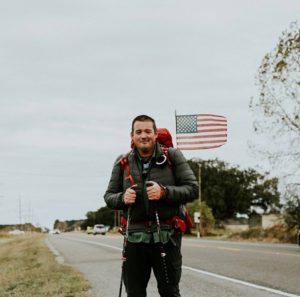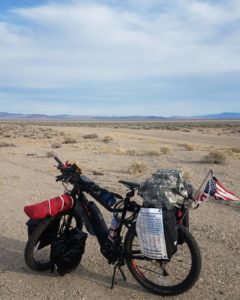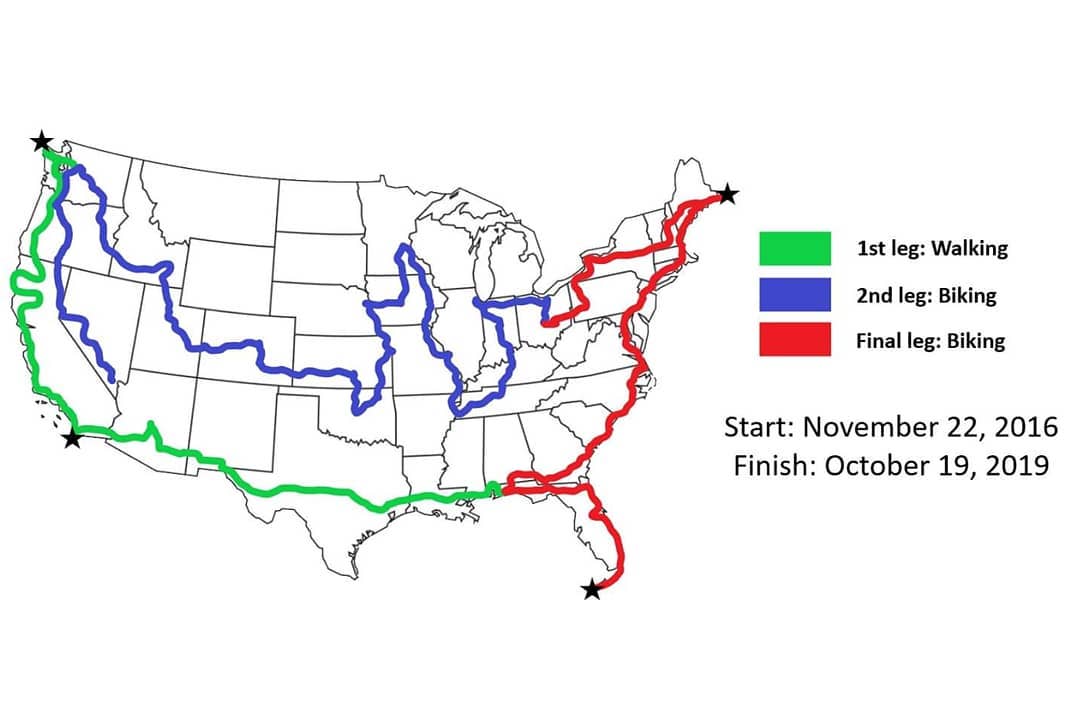
This article contains potentially sensitive material. If you or someone you know is a veteran who suffers from PTSD and needs to talk, reach out to the Lifeline for Vets at 888-777-4443.
Eli Smith grew up in Pickaway County’s Asheville. He played little league and stayed out until the streetlights came on in the town. But now, Smith has made the roads of America his home in an almost nomadic sense.
Smith, who was in the Army and stationed in South Korea until 2002, has taken on the challenge of hiking and biking to every corner of the continental U.S. to raise awareness of Post-Traumatic Stress Disorder and suicide rates among veterans. On average, 20 veterans die every day by suicide from PTSD-related incidents. Southeast Ohio magazine spoke with Smith on his journey so far. At the time of the interview, he had traveled more than 11,000 miles.
Why did you decide to hike for PTSD instead of a different outreach method?
I started this because I lost a couple guys I served with after I got out to PTSD and suicide. I felt like I had to do something about it. It just seemed like a good fit. I wanted to do something that really no one else had done before. The original idea was to walk it, but my knees and back were pretty bad by the time I hit the second corner, so I switched to a bicycle, and I added about 3,000 to 4,000 miles to the original route. Now I’m going through 43 states and pretty much every major city in the country.
Can you run me through what a typical day looks like for you?
 On a typical day, I wake up around 8 a.m., get all packed up, get ready. I usually do an interview before I leave. (I) usually meet a veteran or a local organization for lunch, as well as dinner when I get to the town. There’s a lot of social media I have to keep up with. Go live on Facebook. Meet with different organizations. Interviews. State veterans homes and (Veterans of Foreign Wars) and American Legions. It’s a lot in one day.
On a typical day, I wake up around 8 a.m., get all packed up, get ready. I usually do an interview before I leave. (I) usually meet a veteran or a local organization for lunch, as well as dinner when I get to the town. There’s a lot of social media I have to keep up with. Go live on Facebook. Meet with different organizations. Interviews. State veterans homes and (Veterans of Foreign Wars) and American Legions. It’s a lot in one day.
How do you cope with loneliness and what is something you want people in your hometown to know about your journey?
That it’s all worth it. I remind myself constantly that this journey is making a positive impact in veterans’ lives. I’ve received 12 letters from veterans so far that have come across the journey and changed their minds about suicide. When I get down or lonely and stuff, I remind myself that it’s doing some good.
How can people make a difference in their own communities by helping veterans?
The easiest one is to call or text a vet that you know—any of them. I tell people (to) not assume that the veterans that you think are OK are just fine. Call your local VFW or American Legion and just ask what you can do to help. State veterans homes always need volunteers. The Disabled American Veterans, you can call and they have a van—you don’t need to use your own vehicle—and you use their van to go pick up veterans and take them to appointments. There are Honor Flights that come back from D.C. They can welcome home veterans that are coming back, and a lot of those veterans never had anyone say “welcome home” to them.
Would you do this over again?
It’s really hard to say. I would easily do another awareness journey. I know Australia wants me to come out there and raise awareness for their veterans. They want me to go around the perimeter of Australia. England wants me to come out there. People in Canada have mentioned things. Maybe doing a canoe ride down the entire Mississippi. I don’t know if I’m going to do them, but that would sure be an adventure.
Is there a place people can support you and your journey?
The Facebook page is the main hub: 4CornersHike. I’ve sold everything I own to get this going, partly because I was 70 pounds heavier than I (am now) and no one believed me when I said I was going to walk across America a couple times. From my pickup truck to my kitchen towels, I sold furniture, electronics. Everything I own is on that bicycle, so this journey only continues with donations.
Smith has already traveled to two corners of the U.S. After taking a break during the winter months to visit family and raise awareness in Hawaii, Smith anticipates reaching the third corner in Maine in late spring. After that, he will travel to Florida and complete his four-corners hike.
